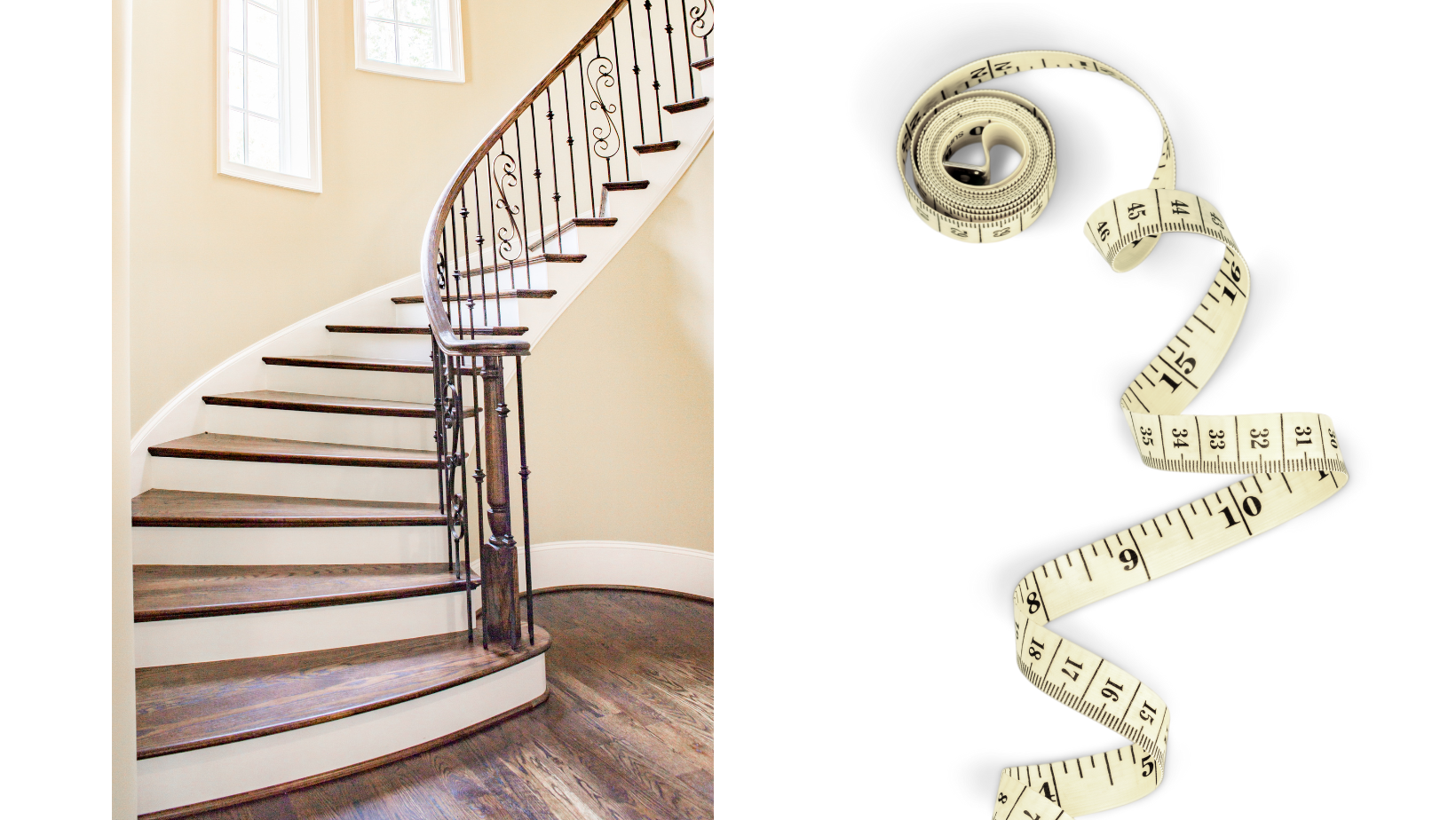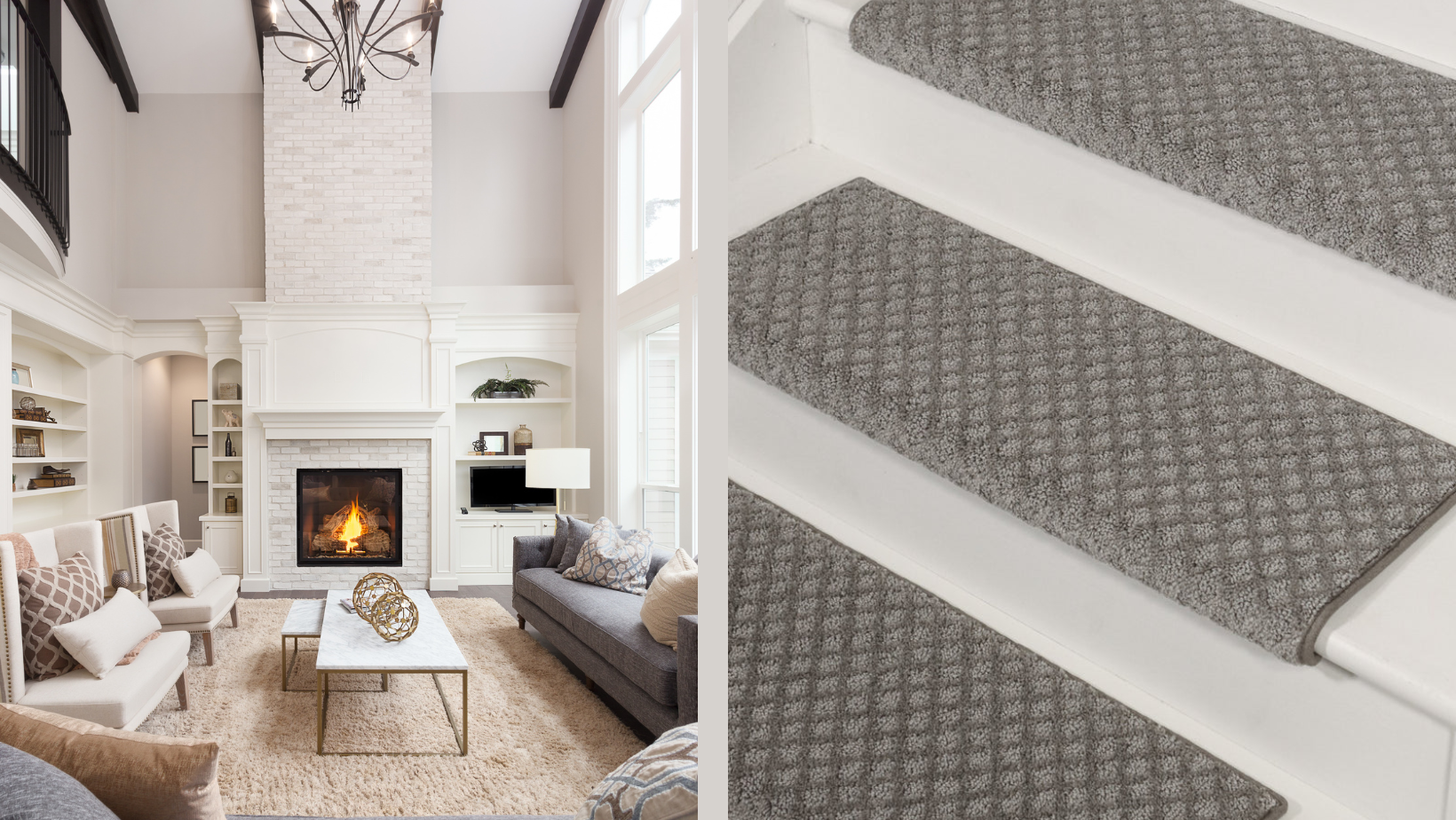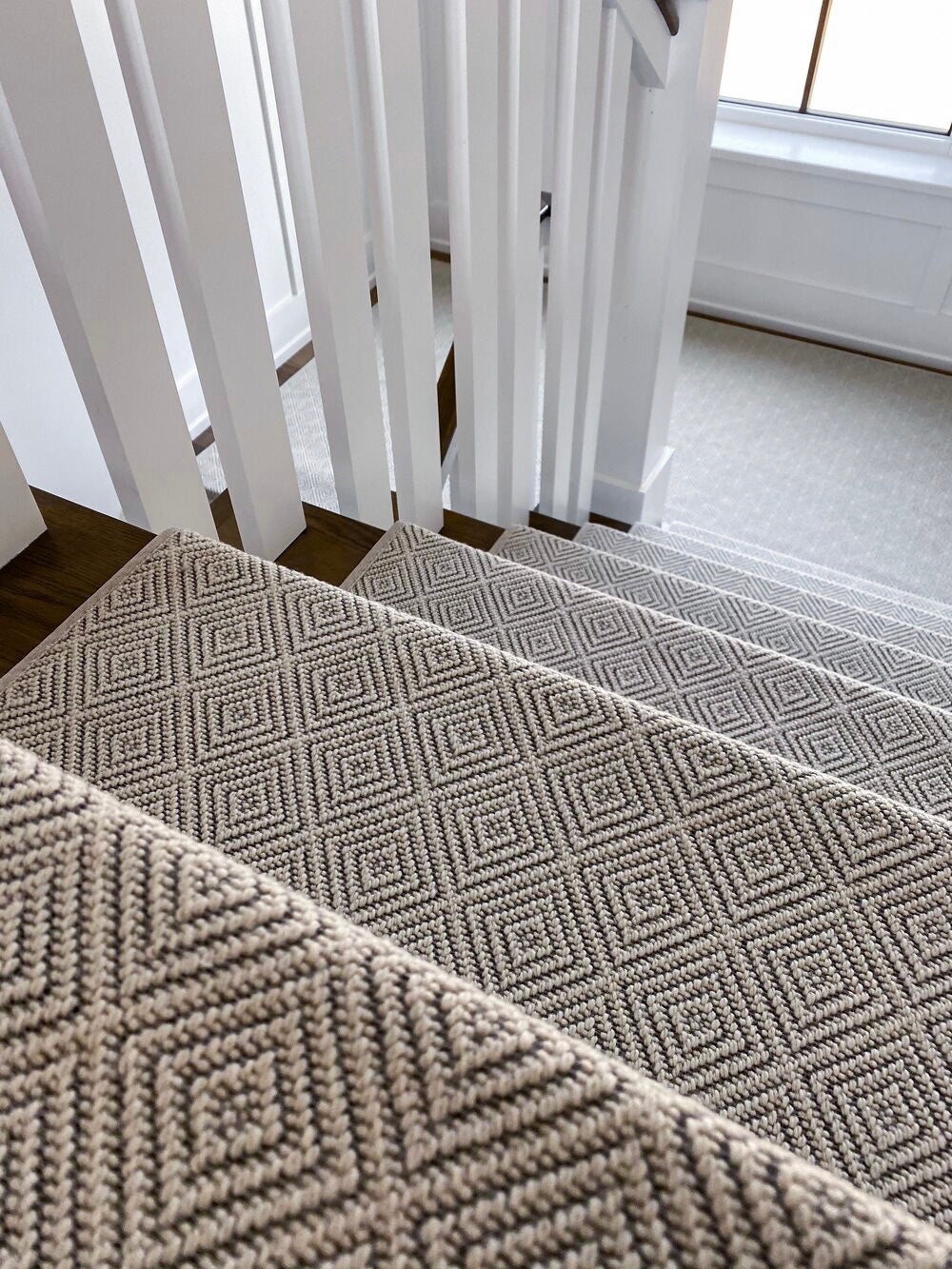Stairs are a vital part of any home, but choosing the right tread width can impact both safety and style.
What is the best tread width for stairs?
The ideal width typically leaves 2-3 inches of space on each side of your carpet stair treads, ensuring a secure fit while maintaining an elegant appearance.
Understanding the correct tread width helps improve stair safety, comfort, and design consistency.
This will guide you through the measuring process, key factors to consider, and expert recommendations for selecting the perfect fit.
Keep reading to make an informed choice and enhance both the functionality and aesthetics of your staircase.
Understanding Stair Step Depth and Width
To choose the best stair tread width, it's important to understand the difference between stair step depth and width and how they impact staircase safety and comfort.
What is Stair Step Depth?
Stair step depth refers to the horizontal distance from the front edge of a step to the back edge of the step above it.
Also known as tread depth, this measurement determines how much foot space each stair provides.
The minimum size of stair treads is typically determined by building codes, which vary by location.
Many regulations require a minimum stair tread depth of 10 inches to ensure safe foot placement.
What is Stair Step Width?
Stair step width refers to the total horizontal span between the two walls or railings enclosing the staircase.
Also called staircase width, this measurement impacts the overall accessibility and functionality of the stairs.
Building codes often require a minimum staircase width of 36 inches for residential properties to ensure safe movement.
Why the Difference Between Stair Depth and Width Matters
Understanding the difference between stair step depth and width is crucial for designing safe, comfortable stairs.
-
A narrow tread depth can make stairs unsafe, especially for children and seniors.
-
A stair width that is too wide may not fit properly within your space.
-
Insufficient stair depth can lead to missteps and accidents.
By choosing a stair tread width and depth that follows safety standards and personal preferences, you can create a functional, stylish, and safe staircase for your home.
How to Measure Stair Step Depth and Width
Accurate measurements are key to selecting the right stair treads.
Follow these steps to ensure you get the best fit.
Tools Needed for Measuring
-
Measuring tape
-
Level
-
Pencil
-
Notebook to record measurements
Step-by-Step Guide to Measuring Depth and Width
-
Measure stair depth. Place the measuring tape at the front edge of the step and extend it to the back edge of the step above it.
-
Measure stair width. Place the measuring tape against one wall or railing and extend it to the opposite wall or railing.
-
Use a level to ensure each step is even and adjust measurements if necessary.
-
Record all measurements for future reference when selecting stair treads.
Common Mistakes to Avoid
-
Measuring from incorrect reference points
-
Using an uneven surface as a guide
-
Ignoring building code regulations
Factors to Consider When Choosing the Best Tread Width for Stairs
Choosing the right tread width involves more than just measurements.
Here are key factors to consider:
Safety Considerations
The safety of your stairs should always be the top priority.
Building codes specify minimum stair tread depths and maximum riser heights to ensure safe use.
If you’re unsure, consult an expert to confirm that your stairs meet local safety standards.
Comfort and Convenience
A wider stair tread provides more foot space, making stairs easier and more comfortable to use.
However, if space is limited, you may need to adjust the tread width to fit within the staircase design.
Aesthetic Appeal
The tread width you choose significantly impacts your staircase’s appearance.
A wider tread creates an open, elegant look, while narrower treads can provide a more traditional feel.
The minimum size of stair treads may also affect the final design of your staircase.
Budget Considerations
Wider stair treads often cost more, especially if using high-quality materials.
Selecting the right tread width means balancing budget with safety and aesthetics.
How to Choose the Right Tread Overhang for Your Stairs
One common question homeowners ask is: How far should stair treads overhang on side?
The tread overhang refers to how much the stair tread extends beyond the edge of the step.
The correct overhang width depends on staircase design and safety guidelines.
Many staircases require an overhang of about ¾ inch to 1¼ inches for optimal safety and usability.
If you're using carpet stair treads, the overhang may vary depending on the material and installation method.
Outdoor vs. Indoor Stair Treads: Does Width Matter?
The best stair tread width may vary depending on whether the stairs are indoor or outdoor.
-
Outdoor stair treads need to be more durable and weather-resistant. Many homeowners opt for wider stair treads to ensure a sturdy walking surface.
-
Indoor stair treads are often custom-fitted for design consistency. If you have a modern or traditional staircase, selecting a tread width that enhances your décor is key.
Customizing Your Stair Tread Width with Oak Valley Designs
Oak Valley Designs offers a variety of pre-made and custom stair treads to fit your exact needs.
Whether you’re looking for standard widths or need a unique size, they provide:
-
Custom sizing options to fit any staircase
-
High-quality materials for durability and safety
-
Stylish designs to match modern and traditional homes
The Impact of Stair Tread Width on Safety and Accessibility
Selecting the right tread width is not just about aesthetics—it plays a crucial role in preventing accidents and ensuring ease of movement.
A well-proportioned tread width provides secure footing and reduces the risk of tripping, especially for children, seniors, and pets.
How Tread Width Affects Stability
A stair tread that is too narrow does not provide enough foot space, increasing the chances of slipping.
On the other hand, an excessively wide tread can make stair navigation awkward, especially in smaller staircases where space is limited.
Tread Width and Code Compliance
Building codes specify minimum and recommended stair tread dimensions to ensure safe use in residential and commercial spaces.
While regulations vary, most require a minimum tread depth of 10 inches, ensuring users have adequate space to step securely.
Choosing the Right Material for Stair Treads Based on Width
The width of your stair treads should complement the material you choose, as different materials offer varying levels of durability and grip.
Selecting the right combination ensures your stairs remain both functional and visually appealing.
Best Materials for Wider Treads
If you’re installing wider stair treads, durable materials like hardwood, composite, or premium carpet stair treads provide long-lasting performance.
These materials offer excellent traction and resistance to wear, making them ideal for high-traffic areas.
Material Considerations for Narrower Treads
Narrower treads benefit from materials with high-friction surfaces, such as textured rubber or non-slip carpet stair treads.
These options improve grip and safety, particularly in areas prone to moisture or frequent use.
By considering both safety and material compatibility, you can select the best stair tread width to match your staircase’s design and function.
Stepping It Up
The best tread width for stairs depends on staircase dimensions, safety requirements, and personal preference.
Ensuring that your stair treads leave 2-3 inches of space on either side creates a balanced and visually appealing look.
Proper measurement and selection help improve stair safety, functionality, and design.
By choosing the ideal tread width, you can enhance your home’s aesthetic appeal and usability.
Whether you need standard or custom-sized treads, selecting the right width ensures a comfortable and secure walking surface.
With careful planning, you can create a safe, stylish, and long-lasting staircase that fits your needs.
Call Us Today!
Looking for the perfect stair treads?
Contact Oak Valley Designs today!
-
Website: https://oakvalleydesigns.com/
-
Phone: 706.331.0315
-
Email: info@oakvalleydesigns.com
-
Address: 30 River Ct SW Bldg E Cartersville, Ga 30120




